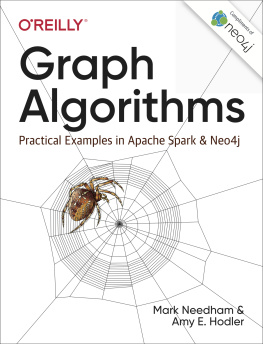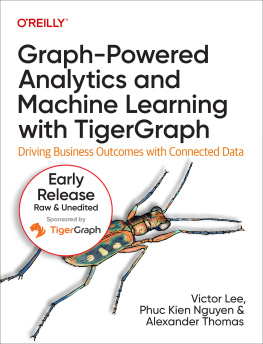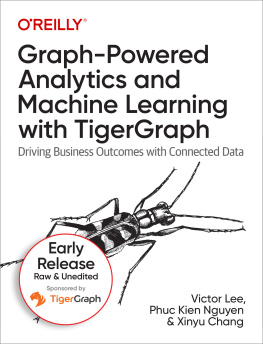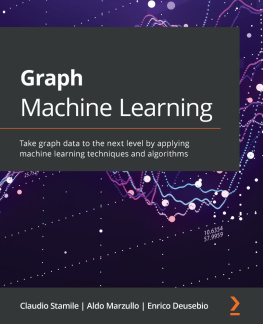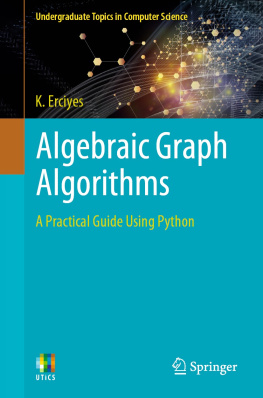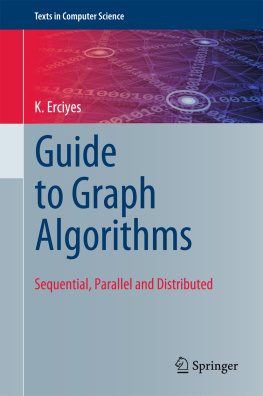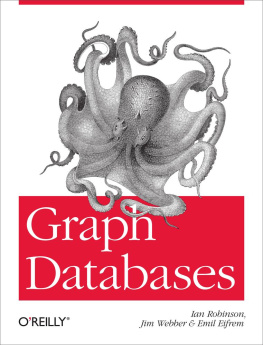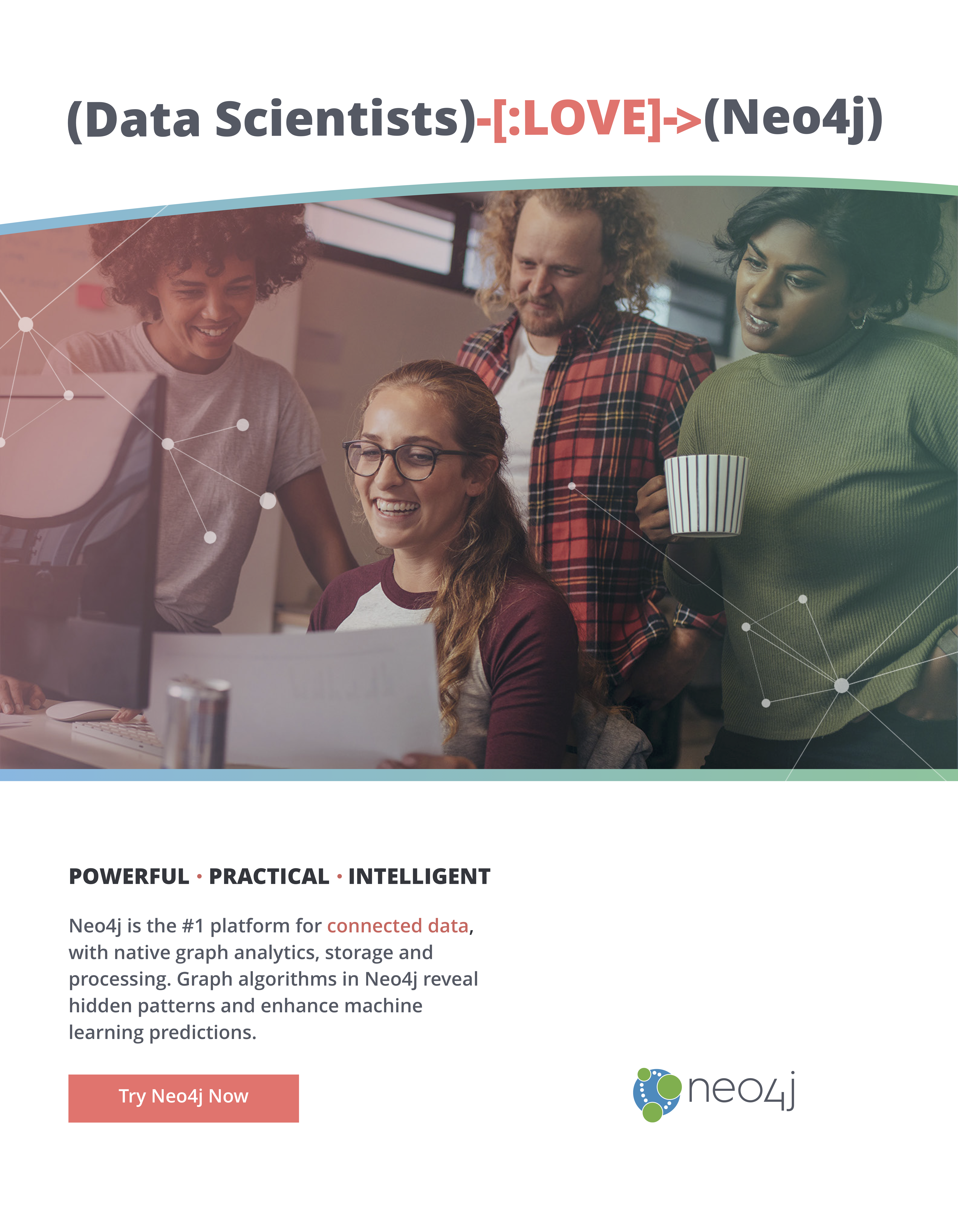Graph Algorithms
by Mark Needham and Amy E. Hodler
Copyright 2019 Amy Hodler and Mark Needham. All rights reserved.
Printed in the United States of America.
Published by OReilly Media, Inc. , 1005 Gravenstein Highway North, Sebastopol, CA 95472.
OReilly books may be purchased for educational, business, or sales promotional use. Online editions are also available for most titles (http://oreilly.com). For more information, contact our corporate/institutional sales department: 800-998-9938 or corporate@oreilly.com .
- Acquisition Editor: Jonathan Hassell
- Editor: Jeff Bleiel
- Production Editor: Deborah Baker
- Copy Editor: Tracy Brown
- Proofreader: Rachel Head
- Indexer: Judy McConville
- Interior Designer: David Futato
- Cover Designer: Karen Montgomery
- Illustrator: Rebecca Demarest
Revision History for the First Edition
- 2019-04-15: First Release
See http://oreilly.com/catalog/errata.csp?isbn=9781492047681 for release details.
The OReilly logo is a registered trademark of OReilly Media, Inc. Graph Algorithms, the cover image of a European garden spider, and related trade dress are trademarks of OReilly Media, Inc.
While the publisher and the authors have used good faith efforts to ensure that the information and instructions contained in this work are accurate, the publisher and the authors disclaim all responsibility for errors or omissions, including without limitation responsibility for damages resulting from the use of or reliance on this work. Use of the information and instructions contained in this work is at your own risk. If any code samples or other technology this work contains or describes is subject to open source licenses or the intellectual property rights of others, it is your responsibility to ensure that your use thereof complies with such licenses and/or rights.
This work is part of a collaboration between OReilly and Neo4j. See our statement of editorial independence.
978-1-492-05781-9
[LSI]
Preface
The world is driven by connectionsfrom financial and communication systems to social and biological processes. Revealing the meaning behind these connections drives breakthroughs across industries in areas such as identifying fraud rings and optimizing recommendations to evaluating the strength of a group and predicting cascading failures.
As connectedness continues to accelerate, its not surprising that interest in graph algorithms has exploded because they are based on mathematics explicitly developed to gain insights from the relationships between data. Graph analytics can uncover the workings of intricate systems and networks at massive scalesfor any organization.
We are passionate about the utility and importance of graph analytics as well as the joy of uncovering the inner workings of complex scenarios. Until recently, adopting graph analytics required significant expertise and determination, because tools and integrations were difficult and few knew how to apply graph algorithms to their quandaries. It is our goal to help change this. We wrote this book to help organizations better leverage graph analytics so that they can make new discoveries and develop intelligent solutions faster.
Whats in This Book
This book is a practical guide to getting started with graph algorithms for developers and data scientists who have experience using Apache Spark or Neo4j. Although our algorithm examples utilize the Spark and Neo4j platforms, this book will also be helpful for understanding more general graph concepts, regardless of your choice of graph technologies.
The first two chapters provide an introduction to graph analytics, algorithms, and theory. The third chapter briefly covers the platforms used in this book before we dive into three chapters focusing on classic graph algorithms: pathfinding, centrality, and community detection. We wrap up the book with two chapters showing how graph algorithms are used within workflows: one for general analysis and one for machine learning.
At the beginning of each category of algorithms, there is a reference table to help you quickly jump to the relevant algorithm. For each algorithm, youll find:
An explanation of what the algorithm does
Use cases for the algorithm and references to where you can learn more
Example code providing concrete ways to use the algorithm in Spark, Neo4j, or both
Conventions Used in This Book
The following typographical conventions are used in this book:
ItalicIndicates new terms, URLs, email addresses, filenames, and file extensions.
Constant widthUsed for program listings, as well as within paragraphs to refer to program elements such as variable or function names, databases, data types, environment variables, statements, and keywords.
Constant width boldShows commands or other text that should be typed literally by the user.
Constant width italicShows text that should be replaced with user-supplied values or by values determined by context.
Tip
This element signifies a tip or suggestion.
Note
This element signifies a general note.
Warning
This element indicates a warning or caution.
Using Code Examples
Supplemental material (code examples, exercises, etc.) is available for download at https://bit.ly/2FPgGVV.
This book is here to help you get your job done. In general, if example code is offered with this book, you may use it in your programs and documentation. You do not need to contact us for permission unless youre reproducing a significant portion of the code. For example, writing a program that uses several chunks of code from this book does not require permission. Selling or distributing a CD-ROM of examples from OReilly books does require permission. Answering a question by citing this book and quoting example code does not require permission. Incorporating a significant amount of example code from this book into your products documentation does require permission.
We appreciate, but do not require, attribution. An attribution usually includes the title, author, publisher, and ISBN. For example: Graph Algorithms by Amy E. Hodler and Mark Needham (OReilly). Copyright 2019 Amy E. Hodler and Mark Needham, 978-1-492-05781-9.
If you feel your use of code examples falls outside fair use or the permission given above, feel free to contact us at .
OReilly Online Learning
Note
For almost 40 years, OReilly has provided technology and business training, knowledge, and insight to help companies succeed.
Our unique network of experts and innovators share their knowledge and expertise through books, articles, conferences, and our online learning platform. OReillys online learning platform gives you on-demand access to live training courses, in-depth learning paths, interactive coding environments, and a vast collection of text and video from OReilly and 200+ other publishers. For more information, please visit http://oreilly.com.
How to Contact Us
Please address comments and questions concerning this book to the publisher:
- OReilly Media, Inc.
- 1005 Gravenstein Highway North

